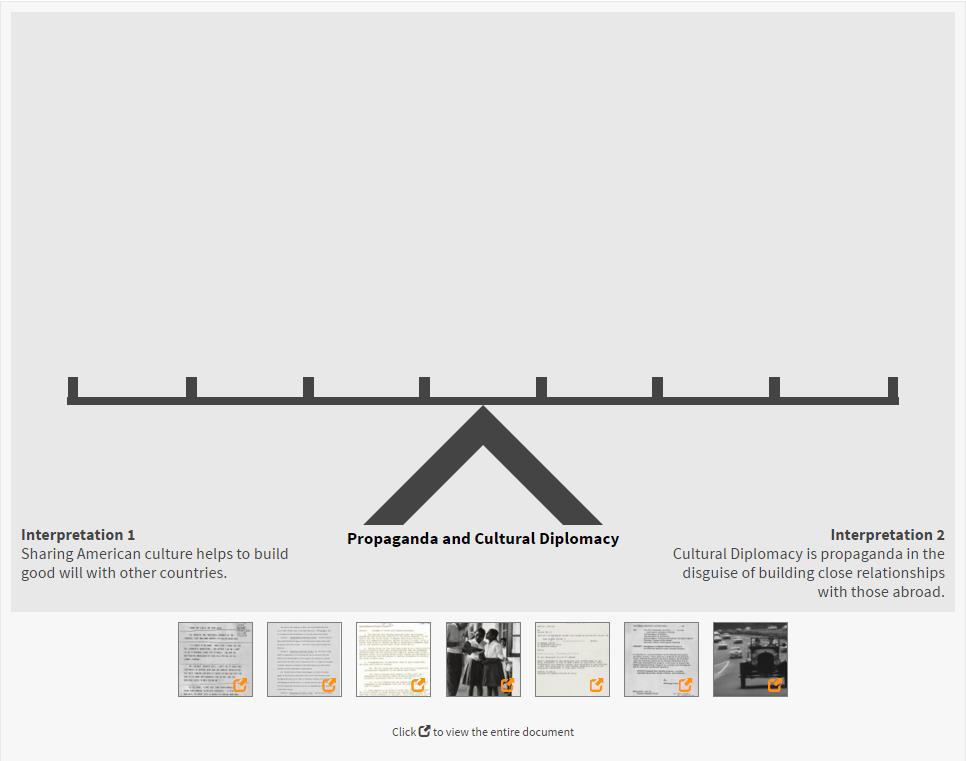Cultural Diplomacy and Propaganda During the Cold War
Weighing the Evidence

About this Activity
- Created by:National Archives Education Team
- Historical Era:Postwar United States (1945 to early 1970s)
- Thinking Skill:Historical Analysis & Interpretation
- Bloom's Taxonomy:Analyzing
- Grade Level:High School
In this activity, students will analyze documents and images that explore the relationship of the United States with foreign countries during the Cold War, and the dissemination of American culture. Students will place each document and image on the scale according to their analysis, and determine if they think that sharing American culture abroad is part of building positive relationships with other countries, or if it is instead propaganda and promoting American self-interest under the guise of building relationships.
https://www.docsteach.org/activities/student/cultural-diplomacy-and-propaganda-during-the-cold-warDocuments in this activity
- Executive Order 10924 Establishing the Peace Corps
- Memorandum on the Exchange of Visits with Russian Astronauts
- National Security Action Memorandum No. 144 Assignment of Highest National Priority to the APOLLO Manned Lunar Landing Program
- Peace Corps Volunteer Roger Rhatton with Students
- President's Backup Copy: Address to a Joint Session of the Congress: Report on the Geneva Summit
- Telegram from Foreign Minister Gabriel S. Valdes of Chile to Secretary of State William P. Rogers
- Wealth of a Nation




